As a part of the COVID-19 reform measures, the Government of India announced key reforms in the agriculture sector which have now been operationalized through promulgating two ordinances. What are these ordinances and what about them? Here is an explainer.
The President of India promulgated two ordinances related to Agriculture on 05 June 2020. These were earlier approved by the Union Cabinet on 03 June 2020. The government has highlighted that the aim of these ordinances is to provide a boost to rural India for farmers engaged in Agriculture and allied activities. These are part of the reforms announced under ‘Aatmanirbhar Bharat Abhiyan’.
The two ordinances promulgated are:
- The Farmers’ Produce Trade and Commerce (Promotion & Facilitation) Ordinance 2020
- The Farmers (Empowerment and Protection) Agreement on Price Assurance and Farm Services Ordinance 2020
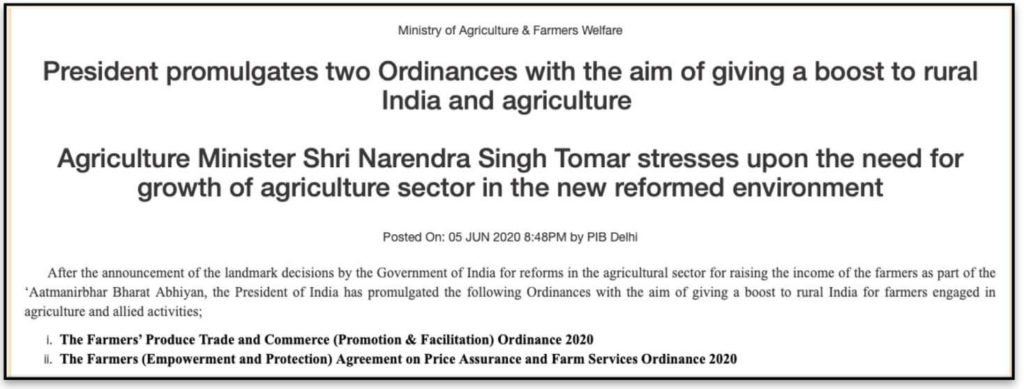
These two ordinances follow earlier interventions taken by the government in increasing the efficiency of Agricultural marketing, which were drafted and circulated for adoption by the states.
- Model Agriculture Produce and Livestock Marketing (APLAM), Act 2017
- Model Agriculture Produces and Livestock Contract farming Act, 2018.
In its press note, the government of India has highlighted that the two ordnances were promulgated to:
- Come up with a national legal facilitative ecosystem to improve intra-state and interstate trade of agriculture produce.
- To provide feasibility to the farmer to sell agricultural produce at a place of their choice at better price and also increase the number of potential buyers.
Apart from these two ordinances, the Government of India has also amended the Essential Commodities Act.
In this story, we look at the details of these two ordinances and analyse their prospective impact on agriculture sector.
The Farmers’ Produce Trade and Commerce (Promotion & Facilitation) Ordinance 2020
The purpose of this ordinance as per the government is to create an ecosystem where
- The farmers and traders have the freedom of choice in terms of sale and purchase of agricultural produce.
- Facilitates better remunerative prices through the creation of alternative trading channels.
- Promote efficient, transparent and barrier-free, Inter-state and Intra-State trade beyond the existing physical marketplaces.
- Provide framework for electronic trading of the produce.
The provisions of this act include:
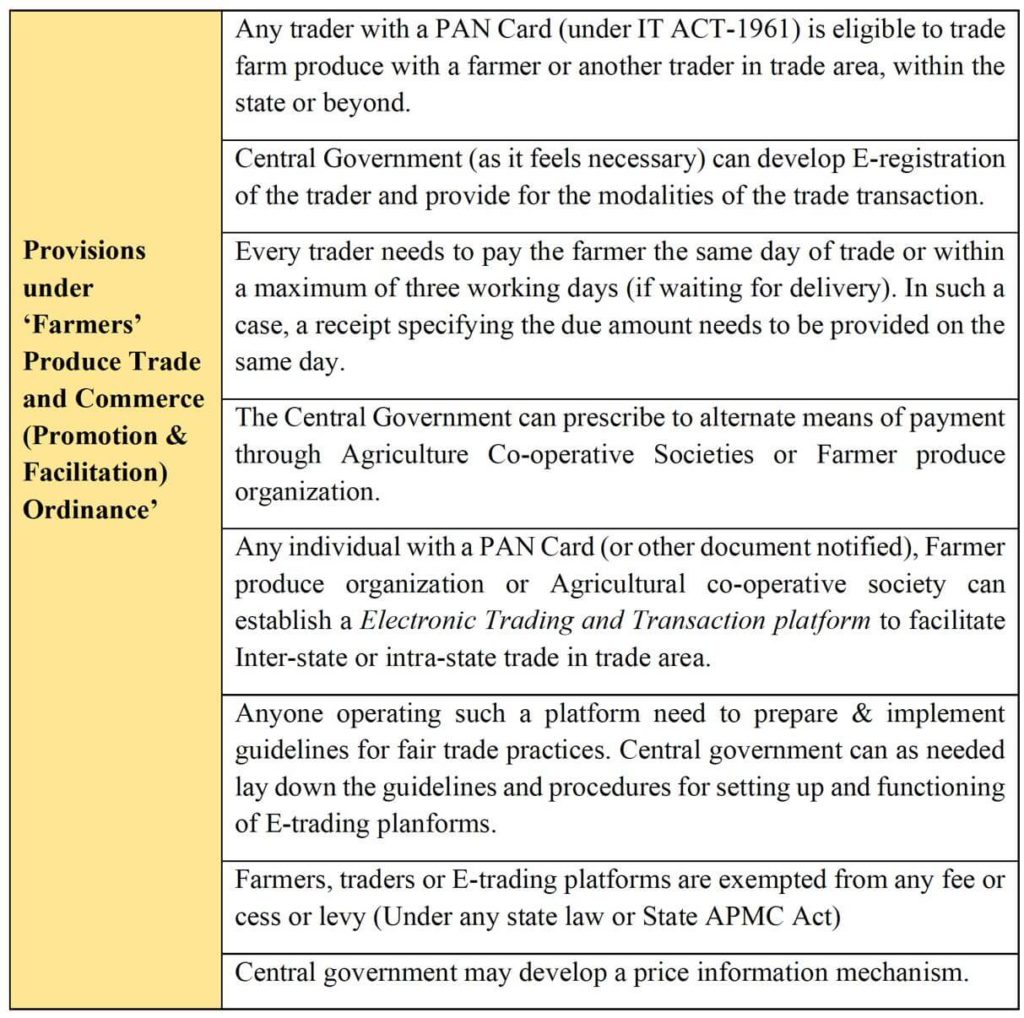
Board of Conciliation to be formed for Dispute resolution
The ordinance also provides the framework for resolution of any dispute which may arise between the farmer and the trader.
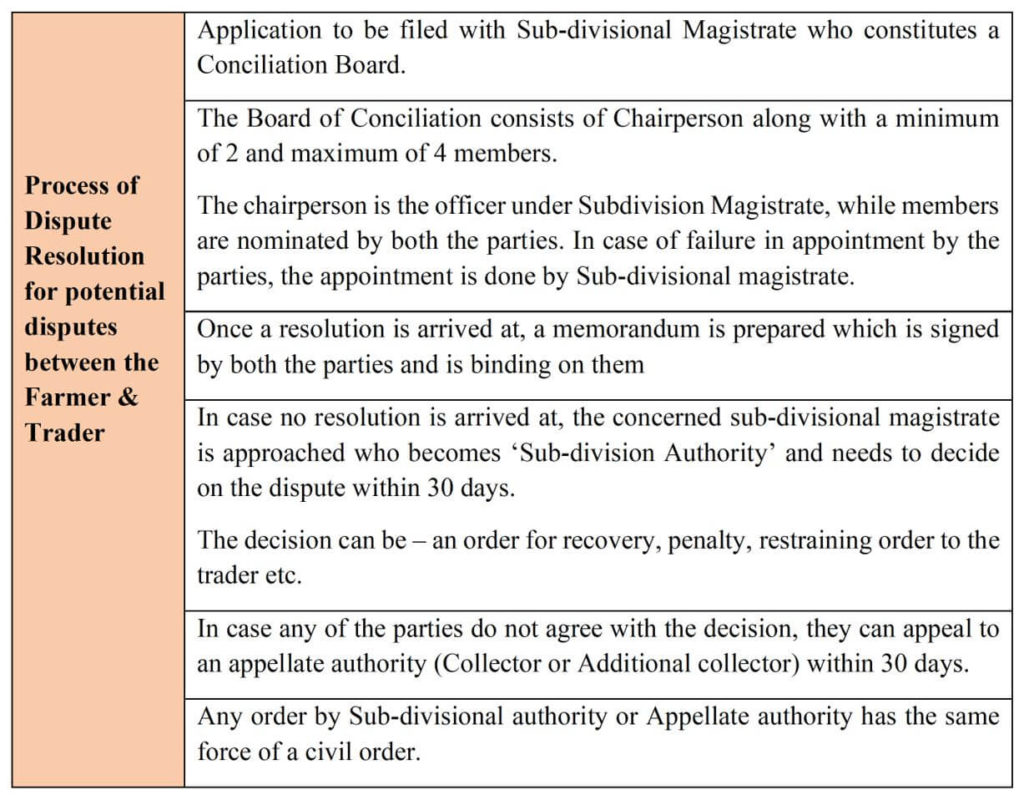
The penalties are also prescribed in the new ordinance.

The Farmers (Empowerment and Protection) Agreement on Price Assurance and Farm Services Ordinance 2020
This ordinance provides for the farmers to get into agreements with others like agri-business firms, processors, wholesalers, exporters, retailers etc. for any of the farm services or future farming produce. A national framework is laid out to safeguard the farmers’ interest and enable them to get into these contracts.
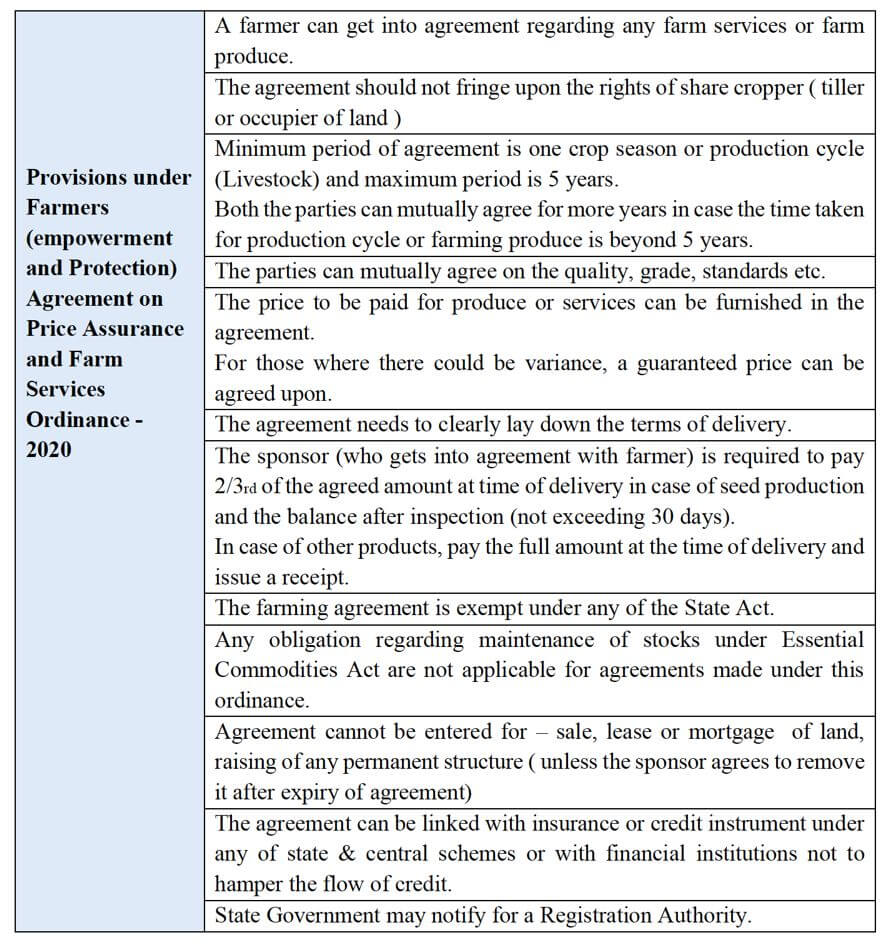
The ordinance lays down the provision for Dispute Settlement
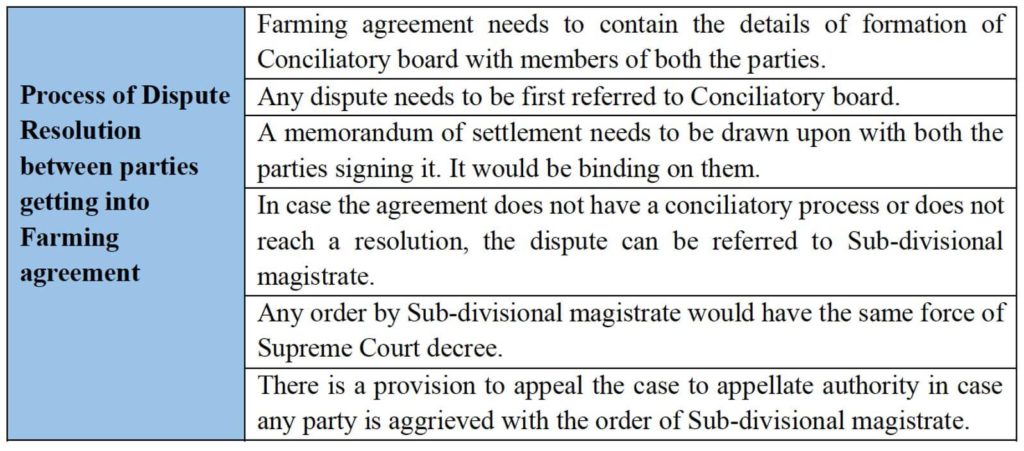
There is no clear consensus on the advantages offered by these ordinances
The government of India has hailed these ordinances as key initiatives towards increasing the revenue of farmers by providing them with more options to market their produce and also to get into agreements on their own. Speaking to Outlook India, NITI Aayog’s Dr. Ramesh Chand has stated that ‘One Nation, One Market’ would help the farmers to increase their revenues. Further , he also highlighted that the initiatives taken to promote Interstate trade would help in meeting the demands of consumers for farm products produced in other states. He further assured that these reforms would also be beneficial to the small farmers as they can benefit from the competitiveness.
However, this is also an issue being highlighted by many other experts as a disadvantage rather than an advantage to the small farmer. They believe that the small farmers do not have the bargaining power and may lose out in the open market. Furthermore, it is being highlighted that the idea of inter stare trade of produce is beyond the small farmer, as one of the main reasons for failure of APMCs or other Government support initiatives is that the small farmers consider it to be less productive to spend on travel to reach out to the potential markets.
Apart from this, the price differentials and subsidies offered by different state governments encourage the farmers to sell within the state itself. Experts have also pointed out the lack of clarity on the provisions made in these ordinances. For example, there is no provision for compulsory written agreement in ordinance relating to Contract farming.
The responsibility of arbitration not being with the government is also being highlighted as a concern. Both the ordinances explicitly state that no lawsuit or legal proceedings would lie against the Central or State Government or Appellate authority for their involvement.
The overall benefit to the farmers would only be known in due course. Meanwhile experts have called for government safeguards to ensure that the farmers are not at a disadvantage.
Featured Image: New Agriculture Ordinances


